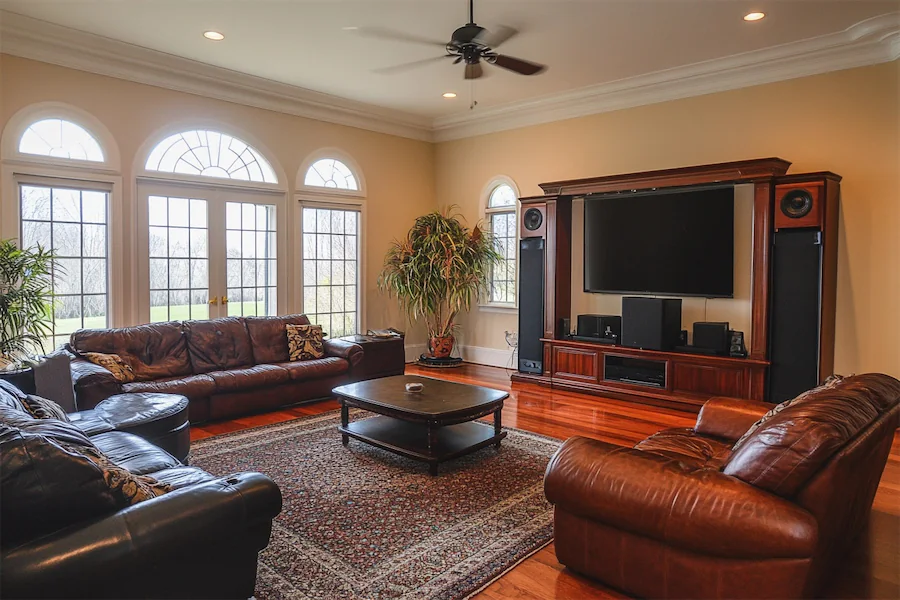Designing a classic modern entertainment room involves blending timeless elegance with contemporary functionality to create a space that is both stylish and practical. Here’s a comprehensive guide to achieving this aesthetic:
Introduction to Classic Modern Entertainment Rooms
A classic modern entertainment room combines traditional design elements with modern technology and minimalistic decor. This fusion results in a sophisticated space that accommodates contemporary entertainment needs while maintaining a timeless appeal.
History and Origins of Classic Modern Style
The classic modern style emerged in the mid-20th century, integrating the simplicity and functionality of modern design with the elegance and detail of traditional aesthetics. This design approach seeks to create harmonious interiors that are both comfortable and enduring, reflecting a balance between old and new.
Key Features of Classic Modern Entertainment Rooms
- Neutral Color Palette: Utilize shades of white, gray, beige, or soft pastels to create a serene and cohesive environment. These colors provide a versatile backdrop for both classic and modern furnishings.
- Quality Materials: Incorporate high-quality materials such as hardwood, marble, and leather to add a sense of luxury and durability. For example, a marble-topped coffee table can serve as a sophisticated centerpiece.
- Elegant Furnishings: Select furniture pieces that feature clean lines and subtle ornamentation. A tufted sofa with a modern silhouette exemplifies this blend.
- Integrated Technology: Ensure that modern entertainment systems are seamlessly incorporated into the design. Built-in cabinetry can conceal wiring and devices, maintaining the room’s aesthetic appeal.
- Balanced Decor: Combine traditional decorative elements, such as crown molding or classic artwork, with contemporary accents like geometric patterns or abstract sculptures to achieve a harmonious look.
Applications of Classic Modern Style in Entertainment Rooms
- Entertainment Centers: Opt for sleek, built-in entertainment centers that provide ample storage while complementing the room’s design. Floating shelves or wall-mounted units can offer a modern touch.
- Lighting: Incorporate a mix of traditional and modern lighting fixtures. A classic chandelier paired with contemporary recessed lighting can create a balanced ambiance.
- Textiles: Use a combination of traditional fabrics, such as velvet or silk, with modern textiles like linen or cotton blends. This mix adds depth and interest to the space.
- Artwork and Accessories: Display a curated selection of art pieces that reflect both classic and modern influences. A vintage painting alongside a contemporary sculpture can exemplify this blend.
Considerations When Designing a Classic Modern Entertainment Room
- Cohesion: Maintain a cohesive design by carefully selecting elements that complement each other. Avoid mixing too many styles to prevent a disjointed appearance.
- Functionality: Prioritize comfort and practicality, ensuring that seating arrangements and entertainment systems meet the needs of all users.
- Personalization: Incorporate personal touches, such as family heirlooms or favorite artworks, to make the space uniquely yours while adhering to the classic modern aesthetic.
Conclusion
A classic modern entertainment room offers a refined and functional space that seamlessly blends traditional elegance with contemporary design. By focusing on quality materials, balanced decor, and integrated technology, you can create an inviting environment perfect for both relaxation and entertainment.
